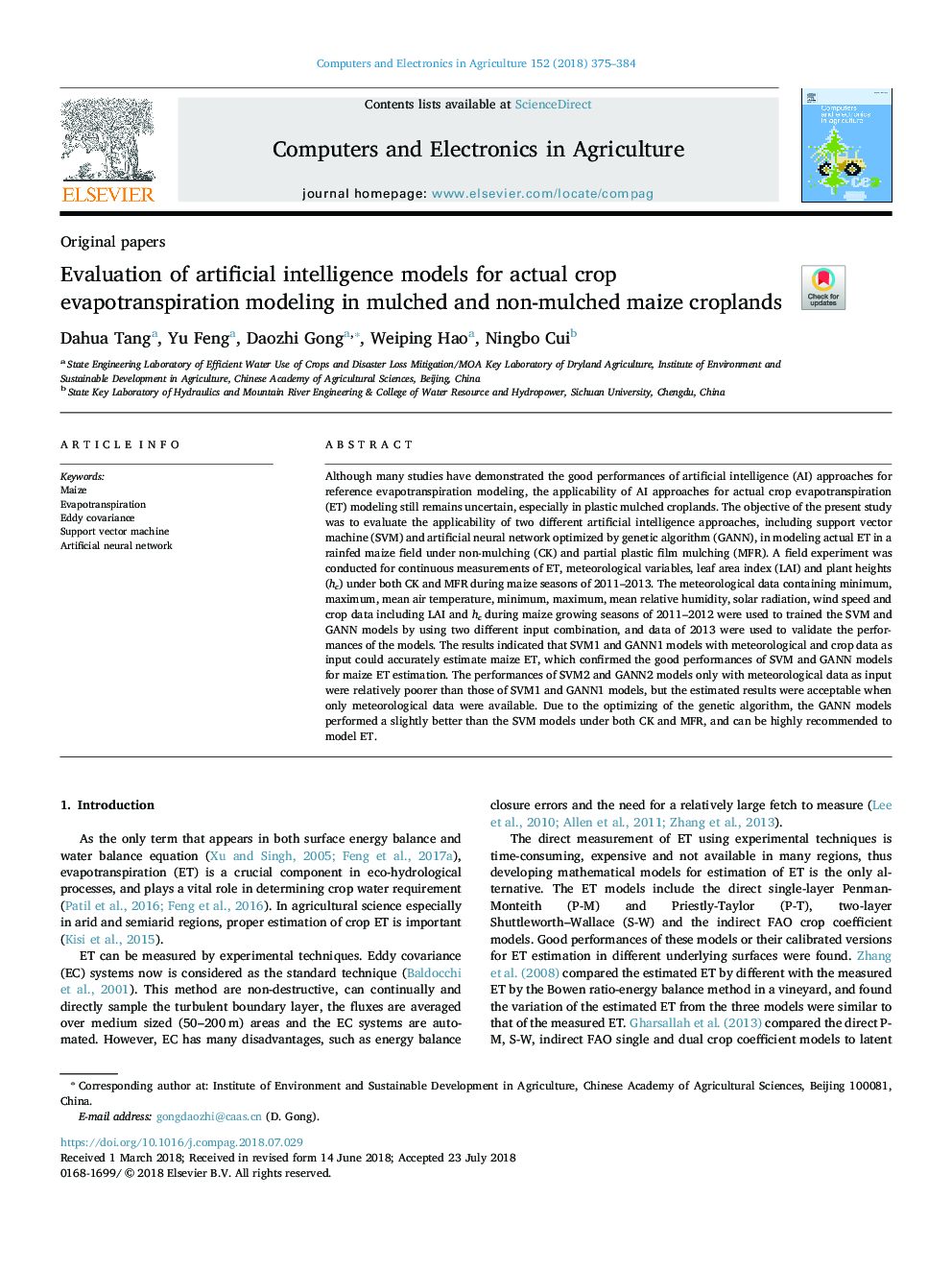| Article ID | Journal | Published Year | Pages | File Type |
|---|---|---|---|---|
| 6539304 | Computers and Electronics in Agriculture | 2018 | 10 Pages |
Abstract
Although many studies have demonstrated the good performances of artificial intelligence (AI) approaches for reference evapotranspiration modeling, the applicability of AI approaches for actual crop evapotranspiration (ET) modeling still remains uncertain, especially in plastic mulched croplands. The objective of the present study was to evaluate the applicability of two different artificial intelligence approaches, including support vector machine (SVM) and artificial neural network optimized by genetic algorithm (GANN), in modeling actual ET in a rainfed maize field under non-mulching (CK) and partial plastic film mulching (MFR). A field experiment was conducted for continuous measurements of ET, meteorological variables, leaf area index (LAI) and plant heights (hc) under both CK and MFR during maize seasons of 2011-2013. The meteorological data containing minimum, maximum, mean air temperature, minimum, maximum, mean relative humidity, solar radiation, wind speed and crop data including LAI and hc during maize growing seasons of 2011-2012 were used to trained the SVM and GANN models by using two different input combination, and data of 2013 were used to validate the performances of the models. The results indicated that SVM1 and GANN1 models with meteorological and crop data as input could accurately estimate maize ET, which confirmed the good performances of SVM and GANN models for maize ET estimation. The performances of SVM2 and GANN2 models only with meteorological data as input were relatively poorer than those of SVM1 and GANN1 models, but the estimated results were acceptable when only meteorological data were available. Due to the optimizing of the genetic algorithm, the GANN models performed a slightly better than the SVM models under both CK and MFR, and can be highly recommended to model ET.
Related Topics
Physical Sciences and Engineering
Computer Science
Computer Science Applications
Authors
Dahua Tang, Yu Feng, Daozhi Gong, Weiping Hao, Ningbo Cui,
